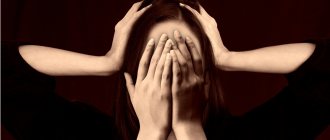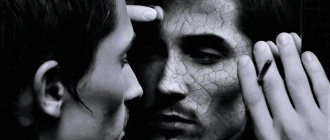The term trichotillomania comes from the Greek words trichos (hair), tillo (pulling out), mania (attraction). This is an impulsive mental disorder, expressed in an irresistible urge to pull out hair in different parts of the body. It was first described in 1889 by the French dermatologist Allopo F.A.
Trigger
According to official data, about 5% of people worldwide suffer from trichotillomania. But this figure is inaccurate, since the lion's share of patients hide their addiction. People are able to hide their addiction for 20 years.
The majority of patients are women. More often, the disease debuts in childhood or adolescence, less often in the range of 20-30 years, and even less often after 40.
The development of the disease is based on the emerging feeling of tension and anxiety. The cause may be a guilt complex, fear, anger, anger and many other conditions that provoke a feeling of anxiety.
The skin where hair grows is well innervated thanks to a dense network of nerve fibers. This increases her sensitivity. A person who pulls out a hair feels pain. In this way, the patient switches attention from mental stress to physical sensations.
Self-inflicted pain acts as a way of self-punishment. Trichotillomaniac uses this method to relieve the stress that torments him. Endorphins, released under the influence of painful impulses, give a feeling of satisfaction, but only for a short time. Soon the feeling returns. The process is repeated.
There is an assumption that the disorder can also satisfy masochistic desires. Allegedly, the patient deliberately intensifies the pain in order to subsequently receive pleasure when the pain subsides. But this theory is just a guess.
Questions and answers
What happens if trichotillomania is not treated?
If trichotillomania is not treated for a long time, then a person experiences social maladjustment. He is forced to limit contact with people to avoid ridicule about his appearance. Because of this, other mental disorders begin to develop and fall into all kinds of addictions. Somatic complications include infectious dermatitis, and ingestion of hair results in intestinal obstruction.
When should you see a doctor?
When the first signs of trichotillomania appear, you should immediately consult a dermatologist, psychiatrist, or psychologist. It is important not only to begin providing assistance at an early stage, but also to conduct a differential diagnosis to exclude severe somatic or mental pathology.
Soil for the development of the disease
Trichotillomania is provoked by various reasons:
- Scientists are conducting research to confirm the genetic nature of the disease. It was found that the same gene, SLITKR1, was damaged in a number of patients.
- Trichotillomania becomes a manifestation of a number of other mental disorders - schizophrenia, depression, neurosis, dementia. It is a symptom of bipolar affective disorder. In most cases, pathological hair pulling is a compulsive action within the framework of OCD - obsessive-compulsive disorder.
- The disease provokes organic damage to the brain.
- Lack of serotonin becomes a provocateur of the disorder.
- Hormonal surges can rightfully claim a role in the occurrence of trichotillomania. The theory is confirmed by the fact that the disease flourishes in adolescence.
- The disorder often develops in people with a special personality type – suspicious, scrupulous, sensitive.
- Trichotillomania can be triggered by severe or prolonged chronic stress. The strongest emotional tension that arises during stress requires an outlet and finds it in such a perverted form.
How it manifests itself
The disease manifests itself suddenly. The patient begins to pull out hair on any part of the body:
- more often - on the head;
- brows;
- eyelashes;
- pubis;
- armpits;
- stomach;
- breast.
As patients themselves note, the desire to pull out hair is so strong that the impulse cannot be drowned out. After completing the action, a feeling of pleasant relaxation appears.
For a trichotillomaniac, hair pulling is a ritual. The strand is wound around the finger in a special way. If the hair is short, it is clamped in a certain way.
The boy fixed the hair bun between his index and middle fingers. The big one pressed it against the index finger, then, using a scrolling method, pulled it out hair by hair. According to the mother, the entire scalp was removed in this way. Afterwards the baby switched to eyebrows and eyelashes.
After the ritual, the person must make sure that the hair is removed. The patient passes the strand between the teeth and bites off the onion.
Typical is trichophagia - eating torn strands. It happens that the patient even eats other people's hair. The phenomenon was noticed back in the 18th century: a French doctor discovered a hairball in the gastrointestinal tract in a 16-year-old boy.
In addition to trichophagia, trichotillomania is accompanied by nail biting and skin trauma. Patients pull out hair from animals and pull threads out of fabric.
Another type of disorder is trichothema mania : a person “thins out” gray hair, believing that in this way he relieves itching.
Pulling out hair strands can be total, to the point of complete baldness, or zonal. Bald skin has a normal appearance with clearly defined follicular ostia.
A trichotillomaniac performs the ritual consciously and unconsciously. Unconsciously, the process occurs in a state of boredom, loneliness, while performing everyday activities - talking on the phone, watching TV, reading a book. Unconscious impulses are born both in a calm state and during a period of peak tension. After complete auto-depilation, a person becomes bewildered when those present tell him about what he did, since he does not remember how he performed the ritual.
Carrying out the procedure consciously, the patient carefully prepares for it. Prepares instruments, tries to retire.
People with trichotillomania carefully hide the areas of forced baldness. To do this, they use improvised methods. They wear hats, scarves, and wigs. Eyebrow tattooing and eyelash extensions.
Childhood variant of the disorder
The development of trichotillomania in children is primarily influenced by the way they are raised:
- The disorder in most cases develops in a child with a developed sense of guilt or an inferiority complex. This is facilitated by raising children in an atmosphere of increased severity, total control, constant reprimand and inflated demands;
- overprotective parenting model;
- coldness, lack of attention. So, a 4-year-old boy pulled out all the hair on his head. When his mother brought him to the reception, during the conversation it became clear that the boy was experiencing an acute lack of parental love. The father drinks heavily, so he does not pay attention to his son. The mother works two jobs to support the family. Due to lack of time, he communicates little with the child;
- conflicts between parents, their parents' divorce.
The lack of an emotional response from loved ones also affected the 9-year-old girl Lena. She did not have a father, her mother paid little attention to her daughter, devoting all her free time to organizing her personal life. Lena has a guilt complex. The girl believes that she caused her mother a lot of grief. She is constantly told stories about how her mother suffered during pregnancy. The birth itself caused complications in the uterus, which had to be removed.
Lena went to kindergarten early. The girl let her mother go every morning with tears. The woman did not show a drop of sympathy. The child had to be calmed down by the teachers.
At the age of 5, Lena developed a tendency to pull her hair while lying in bed before going to bed. Unnoticed bald patches appeared on the head. The mother took the child to the doctor who prescribed treatment. There was no desired effect after therapy. They did not find out the reason.
Only at the age of 9, when the girl went completely bald, became fearful and closed, did Lena’s mother take her to a psychiatrist, who diagnosed trichotillomania.
In childhood, the disease begins to manifest itself after 3 years. Such kids carry out auto-depilation uncontrollably: while playing, watching cartoons, and also in situations of stress. The child does not try to hide pathological actions.
In adolescents, in addition to the costs of education, trichotillomania is provoked by a tense environment in the school community and problems in communicating with peers.
Adolescent trichotillomaniacs are already prone to deliberately causing hair mutilation to themselves. They perform rituals manually or prepare tweezers. The procedure requires privacy. The disease brings them discomfort. Children try to control their actions, but control over rituals only strengthens their manifestations.
A 13-year-old girl went on summer holidays with a friend and her family to relax at their dacha. The girl was so struck by her friend’s warm relationship with family members, in contrast to her relationship with her parents, that two weeks later the mother did not recognize her daughter. Upon arrival home, the girl returned completely without eyelashes. Trichotillomania was triggered by contrasting relationships between parents and children in different families.
The clinical picture of the disease is similar in adolescents to adults. There is an element of awareness of the mutilation. Teenagers also try to hide traces of auto-depilation: they wear hoods and robes. Often, a half-plucked eyebrow becomes an indicator.
TREATMENT
TTM treatment is carried out jointly by a dermatologist and a psychiatrist. The leading role in the management of the patient belongs to the psychiatrist.
Tasks of a dermatologist:
- Make a diagnosis of TTM (based on a dermatological examination, trichoscopy data, assessment of the adequacy of the patient’s response to questions asked during the conversation).
- Convince the patient (his legal representatives) to visit a psychiatrist. When referring a patient to a psychiatrist, the dermatologist must rely on the Law of the Russian Federation “On Psychiatric Care and Guarantees of the Rights of Citizens in Its Provision” No. 3185-I dated 07/02/1992 (as amended and supplemented), the main principle of which – the voluntariness of seeking psychiatric help – may be violated only in cases specifically established by the legislation of the Russian Federation.
- Prescribe symptomatic treatment:
- antiseptics and local antibiotics in case of secondary infection; - topical corticosteroids to reduce inflammation; - hair growth stimulants (minoxidil, etc.); - antifungal therapy (if necessary).
Psychiatric part of treatment
The gold standard treatment for TTM is cognitive behavioral psychotherapy (CBT). The effectiveness of habit reversal training (HRT) as a CBP method has been confirmed by numerous studies. The goal of HRT is to gradually replace one behavior pattern with another. The main stages of HRT: 1) bring the patient to the awareness of what he is doing and that this action is preceded by an urge; 2) teach the patient to recognize situations in which unwanted behavior occurs; 3) develop strategies for the patient to use alternative methods of behavior when the urge appears. Group psychotherapy is of great importance, providing for the active participation of the patients themselves in the treatment, which is led by a psychotherapist. The issue of prescribing psychopharmacotherapy (PPT) remains controversial. Data on the effectiveness of the use of PFT in mono- and complex therapy of TTM are scarce, ambiguous, and in some cases contradictory, which indicates the need for additional study of this problem. Currently, the prospects for using the following groups of drugs for TTM are being discussed: a) antidepressants (SSRIs - sertraline, citalopram, escitalopram; SSRIs - bupropion; tricyclics - clomipramine); b) opioid receptor antagonists (naltrexone); c) mood stabilizers (lithium preparations); d) cannabinoid receptor agonists (tetrahydrocannabinol); e) glutamate modulators – N-acetylcysteine (at a dose of 1200-2400 mg/day); f) antipsychotics (olanzapine, aripiprazole, risperidone, haloperidol); g) anxiolytics (alprazolam, medazepam); h) central nervous system stimulants (fenfluramine); i) antiepileptic drugs (oxcarbazepine, valproic acid drugs). Among alternative methods of treating TTM, hypnotherapy is considered the most effective, especially in children. Author: Vlad Belovolkov Materials used:
- Albanova V.I. Trichotillomania. Russian Journal of Skin and Venereal Diseases, – 2013. – No. 5.
- Buyanov M.I. Systemic psychoneurological disorders in children and adolescents (a guide for doctors and speech therapists). – M.: Russian Society of Medical Writers, – 1995. – 192 p.
- Pediatric dermatovenerology: textbook. for students of higher institutions. honey. prof. education / ; edited by I.A. Gorlanova. – M.: Publishing House, – 2012. – 352 p.
- Kondrakhina I.N., Mareeva A.N. Non-invasive diagnosis of non-scarring alopecia using trichoscopy. Bulletin of dermatology and venereology, – 2014. – No. 5.
- Kostyreva (Ignatenko) I.E. Algorithm for managing patients with suspected autodestructive skin diseases / N.V. Kungurov, N.V. Zilberberg, M.M. Kokhan, V.A. Iglikov, I.E. Kostyreva (Ignatenko), K.Yu. Retyunsky - Ekaterinburg, 2013. - 44 p.
- Lvov, A.N. Dermatoses comorbid with mental disorders: classification, clinical picture, therapy and prevention. / A.N. Lviv // . – M., 2006.
- International statistical classification of diseases and related health problems. Tenth revision. Volume I, II, III (Russian version), World Health Organization, Geneva, 1995.
- Guide to addictionology / Ed. prof. V.D. Mendelevich. St. Petersburg: Rech, 2007. – 768 p.
- Abraham LS, Torres FN, Azulay-Abulafia L. Dermoscopic clues to distinguish trichotillomania from patchy alopecia areata. An Bras Dermatol. 2010; 85: 723–6.
- Christenson GA, Mackenzie TB, Mitchell JE Characteristics of 60 adult chronic hair pullers.The American journal of psychiatry. 1991;148(3):365-370.
- Christenson GA, Mackenzie TB, Mitchell JE, Callies AL A placebo-controlled, double-blind crossover study of fluoxetine in trichotillomania. The American journal of psychiatry. 1991; 148(11): 1566–1571.
- Diagnostic and Statistical Manual of Mental Disorders, Fifth Edition. 5thed. Washington, DC: American Psychiatric Association; 2013: 251-4.
13. Fred Penzel. The Hair-Pulling Problem: A Complete Guide to Trichotillomania. // Oxford University Press, 2003. – 384 p.
- Gallouj S., Rabhi S., Baybay H., Soughi M., Meziane M., Rammouz I. et al. Trichotemnomania associated to trichotillomania: A case report with emphasis on the diagnostic value of dermoscopy. Ann Dermatol Venereol. 2011; 138:140–1.
- Gupta S., Gardi PD Habit reversal training for trichotillomania. International Journal of Trichology. 2012. Vol. 4, no.. 1. pp. 39-41.
16. Johnson J., Abir T. El-Alfy. Review of Available Studies of the Neurobiology and Pharmacotherapeutic Management of Trichotillomania. Journal of Advanced Research. 2015 17. Keuthen NJ, Makris N, Schlerf JE et al. Evidence for reduced cerebellar volumes in trichotillomania. Biol. Psychiatry. 2007; 61(3):374–81
- McGuire, J. F. Ung, D. Selles, R. R. Rahman, O. Lewin, A. B. Murphy, T. K. Storch et al. Treating trichotillomania: a meta-analysis of treatment effects and moderators for behavior therapy and serotonin reuptake inhibitors. Journal of psychiatric research. 2014; 58: 76-83.
19. Samuel R. Chamberlain, Lara A. Menzies, Naomi A. Fineberg et al. Gray matter abnormalities in trichotillomania: morphometric magnetic resonance imaging study. The British Journal of Psychiatry. 2008, 193(3): 216-221. 20. Weaver J. Key to psychological disorder may lie in the immune system. Nature. 2010 21. Woods DW, Wetterneck CT, Flessner CA A controlled evaluation of acceptance and commitment therapy plus habit reversal for trichotillomania. Behavior research and therapy. 2006; 44 (5): 639–56. 22. Zuchner S. et al. SLITRK1 mutations in trichotillomania. Mol Psychiatry. 2006; 11(10): 887. 23. https://old.news.bbc.co.uk/2/hi/health/5381232.stm 24. https://old.dermalatlas.ru 25. https://old .www.dermatology.ru/ 26. https://old.emedicine.medscape.com/article/1071854-treatment 27. https://old.www.encyclopedia.com/topic/Trichotillomania.aspx 28. https:/ /en.wikipedia.org 29. https://old.medportal.ru/mednovosti/news/2006/10/02/genes/ 30. https://old.www.skinmaster.ru
What are the dangers of trichotillomania?
The consequences of the disease include physical and social impairment.
Among the physical consequences, it is worth highlighting the damage to the gastrointestinal tract that occurs when eating hair. During the process of trichophagia, a bezoar is formed in the stomach - a hairball. It causes a lot of inconvenience - from stomach pain to indigestion. The extreme of this disorder is called “Rapunzel syndrome” - a condition where a strand of hair extends from the stomach into the intestines.
Rapunzel syndrome is an extremely dangerous phenomenon that threatens the patient with death. A case was described in which a hairball weighing 4 kg was removed from a girl’s gastrointestinal tract.
In addition, eating hair affects the condition of tooth enamel.
Skin that is traumatized at the site where the hair follicle is pulled out can become infected. In addition, if you systematically remove hair in a certain area over a certain period of time, it grows more slowly. On the head, in the area of eyelashes, eyebrows, complete baldness becomes an aesthetic problem.
The absence of eyelashes provokes vision problems:
- inflammation of the eyelids, mucous membranes of the eyes;
- conjunctivitis;
- blepharitis;
- furunculosis;
- microtrauma of the eye.
Socially, the disease causes no less problems than physically. Patients realize the absurdity of their condition, hide their pathological tendencies and unattractive consequences. They try to fight, but it doesn’t work out well alone.
It is worth noting that society is poorly aware of the problem of trichotillomania. Therefore, an unevenly bald person without eyebrows and eyelashes involuntarily causes bewilderment and sarcasm on the part of others.
Self-flagellation and public bullying make trichotillomaniacs depressed and force them to isolate themselves from their surroundings, which threatens complete social isolation, loss of friendly contacts, and loss of self.
EPIDEMIOLOGY
Previously, it was mistakenly believed that TTM was an extremely unusual and rare disease. However, epidemiological studies have shown that TTM affects from 1-3% to 5% of the planet's population. Among the patients, females aged 11-16 years predominate. There is an opinion that the real number of cases of TTM is underestimated due to the denial of their behavior by some of the respondents, as well as their tendency not to seek help. This may particularly apply to men who claim androgenetic alopecia to hide their condition. In addition, practicing dermatologists are often unaware of the existence of this disorder and may not ask patients whether they pull out hair.







